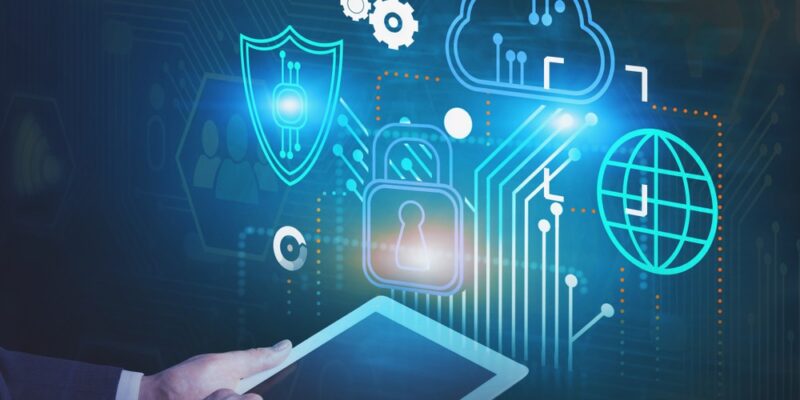
In the relentless battle against piracy, the integration of Artificial Intelligence (AI) brings a new dimension to content protection. This article explores the paradigm of AI-powered piracy prediction and its role in implementing proactive measures. By delving into the capabilities of AI, we unveil how predictive analytics and machine learning empower content creators and distributors to stay ahead of piracy threats, fostering a more resilient and secure digital content ecosystem.
Introduction:
As piracy threats continue to evolve, the incorporation of Artificial Intelligence (AI) marks a transformative phase in content protection strategies. This article explores the concept of AI-powered piracy prediction and its proactive measures. By unlocking the potential of AI, we illuminate how predictive analytics and machine learning contribute to staying ahead of piracy threats, fortifying the digital content ecosystem with resilient and proactive content protection measures.
- Predictive Analytics: Anticipating Piracy Trends:
AI-driven predictive analytics revolutionize content protection by anticipating piracy trends. Through analysis of historical data and emerging patterns, AI algorithms can forecast potential piracy threats. Content creators and distributors equipped with these insights can implement preemptive strategies to counteract piracy before it gains momentum.
- Machine Learning Models: Adapting to Evolving Threats:
Machine learning models within AI systems continuously adapt to evolving piracy threats. By learning from real-time data and user behaviors, these models enhance their ability to identify and predict new piracy tactics. This adaptability empowers content protection measures to remain one step ahead of the ever-changing landscape of digital piracy.
- Behavior Analysis: Identifying Anomalies and Suspicious Activities:
AI-powered piracy prediction involves behavior analysis to identify anomalies and suspicious activities associated with piracy. By monitoring user interactions, content access patterns, and distribution channels, AI systems can detect deviations from normal behavior, signaling potential piracy attempts. This proactive approach allows for timely intervention to prevent unauthorized dissemination.
- Dynamic Watermarking Integration: Securing Tracked Content:
The synergy of AI with dynamic watermarking enhances content security. AI systems can intelligently integrate dynamic watermarks into tracked content, providing a proactive layer of protection. This dynamic approach enables content to be traced, even as it circulates through various channels, deterring potential pirates with the knowledge of traceable content.
- Real-time Monitoring: Swift Responses to Emerging Threats:
AI facilitates real-time monitoring of digital platforms, enabling swift responses to emerging piracy threats. By continuously scanning digital channels and platforms, AI-powered systems can detect unauthorized distribution in its early stages. This real-time awareness empowers content creators to take immediate actions, mitigating the impact of piracy.
- Collaboration with Industry Stakeholders: Strengthening the Collective Defense:
AI-driven piracy prediction fosters collaboration among industry stakeholders. By sharing predictive insights and threat intelligence, content creators, distributors, and anti-piracy organizations can collectively strengthen the defense against piracy. This collaborative approach creates a unified front to proactively address common threats to the digital content ecosystem.
- Customizable Security Protocols: Tailoring Measures to Specific Content:
AI’s adaptability allows for the customization of security protocols based on specific content types. By analyzing the unique characteristics of different types of digital assets, AI-powered systems can tailor content protection measures accordingly. This customization enhances the effectiveness of proactive measures, addressing the diverse challenges posed by piracy.
- Continuous Learning: Improving Predictive Accuracy Over Time:
AI-powered piracy prediction is a continuous learning process. As algorithms analyze new data and respond to emerging piracy tactics, the predictive accuracy of AI systems improves over time. This iterative learning cycle ensures that content protection measures remain highly effective and adaptive in the face of evolving piracy threats.
Conclusion:
AI-powered piracy prediction represents a groundbreaking advancement in content protection, empowering content creators and distributors with proactive measures. By leveraging predictive analytics, machine learning models, behavior analysis, and dynamic watermarking integration, AI systems create a resilient defense against piracy threats. The continuous learning aspect ensures that these proactive measures evolve and adapt to the ever-changing landscape of digital piracy, fostering a more secure and sustainable digital content ecosystem. As AI continues to shape the future of content protection, it stands as a formidable ally in the ongoing battle against piracy, providing content stakeholders with the tools to anticipate, prevent, and counteract piracy threats proactively.

